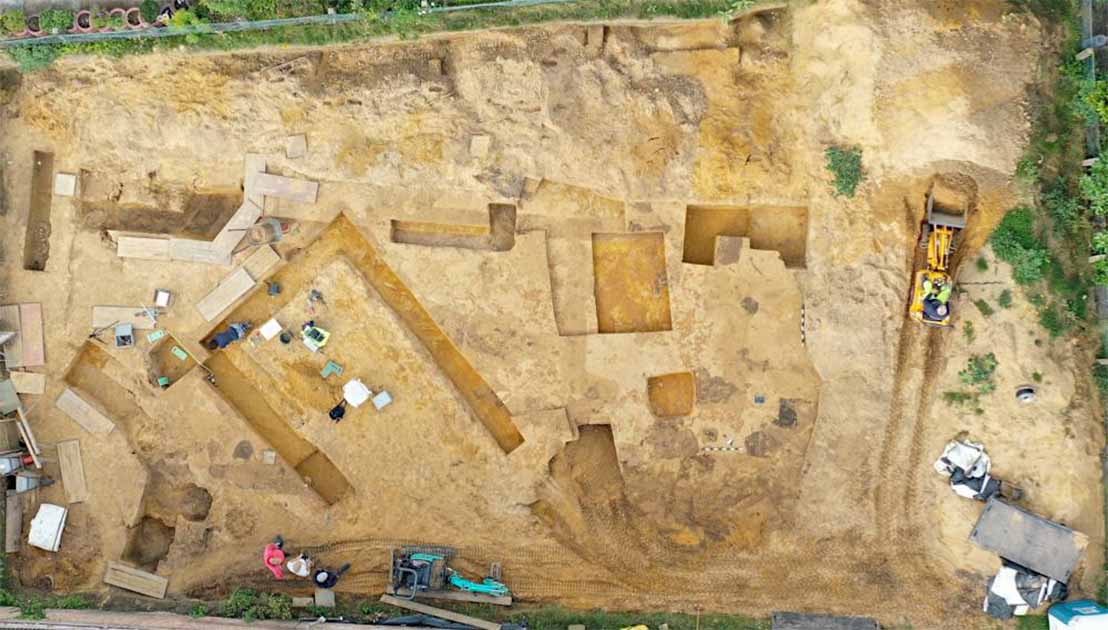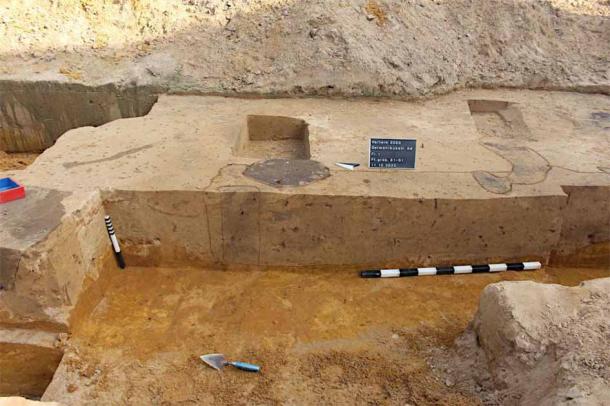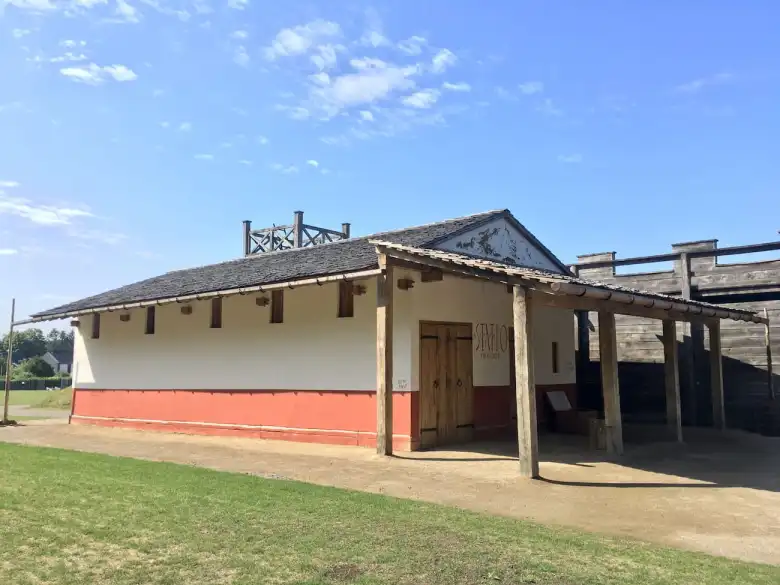Discovering Twin Temples at the Haltern Roman Camp: Sacred Surprises

During the Roman wars with the Celtic tribes of ancient Europe, when they acquired new lands, they built forts, defensive walls and temples. Now, a team of archaeologists in Germany have made the unique discovery of two cult temples, a circular ditch, and a sacrificial pit, at the former Haltern Roman camp in northwestern Germany. This find represents “the first time” the remains of temples have ever been identified at a Roman military site.
Unprecedented Archaeological Discovery at Haltern Roman Camp
In 16 to 13 AD, the Roman Commander Drusus reorganized the Rhine frontier and invaded the country on the east bank. His main objective was the conquest of the Sugambri in the valley of the Lippe, close to the Roman stronghold at Xanten. While this invasion was fronted as a retaliation for a previous Sugambrian invasion, most historians agree that he more probably aimed to secure the fertile, corn rich Lippe valley.
Drusus created one of the most important Roman military camps in Germania, located on the right bank of the Rhine. Now known as the Haltern Roman camp, the camp measures 19 hectares, hosting around 5,300 soldiers and auxiliaries from the Nineteenth Legion. According to a statement by the discovery team, the two building floor plans formerly belonged to “rectangular cult buildings made of clay framework, with a small portico made of two columns.”

In the excavation area of the former military camp, known as the Faltern Roman camp, the foundations of the temples can still be seen as faint soil discoloration (LWL / C. Hentzelt)
Misinterpreting the “Surprising Find” at Haltern Roman Camp
This Roman camp was previously excavated in 1928, after which the site was infilled to preserve the remains. Known as the “twin temples,” the two sacred rectangular structures found at Haltern Roman camp were associated with a more expansive building complex measuring around 2,000 square meters (21,500 square feet).
Not expecting to unearth any Roman temples within a military camp, at first the archaeologists assumed one of the buildings was a Roman schola, or meeting space for military officials. Furthermore, the discovery of tools led to the misinterpretation that the meeting room had later been repurposed as a workshop.
The researchers said the two sacred spaces unearthed within the Haltern Roman camp were “large stone podium temples,” similarly to examples in many contemporary Roman cities during the reign of Emperor Augustus between 31 BC to 14 AD. Lead archaeologist, Bettina Tremmel, from the Regional Association of Westphalia-Lippe (LWL) in Germany, said that between the two temples the team found “a shallow, circular sacrificial pit.”

Tremmel described the pit as “a surprising find” because Roman law forbade graves within camps and cities. Michael Rind, director of archaeology at LWL, explained that the two small temples, and the niche building with the burning pit, are “a unique building group within a Roman camp.”
Deep Diving Augustinian Temples
The word “temple” comes from the Latin templum, originally denoting a sacred space rather than a physical building. In ancient Rome, temples were carefully planned and measured sacred areas, created by skilled geometers. These experts used calibrated ropes and wooden posts to ensure precise alignment.
Caesar’s Savage Human Skewers Unearthed In German Fort
Xanten Archaeological Park – Step Back and Experience the Romans
Roman temples were designed with aesthetic principles and followed a cosmic code outlined by Vitruvius, a prominent Roman author, architect and military engineer. According to Vitruvius, the architecture of Roman temples relied on symmetry and proportion, adhering to a universal code. He emphasized the importance of components being in exact relation to the whole.
Augustinian temples often had double square foundations, aligning with musical principles, where halving a string’s length results in a note one octave higher due to the doubling of vibrational frequency.
Only time will tell, but I put my money on the twin temples discovered at the Haltern Roman camp having double square foundations. This would perfectly conform with classic Augustinian building dynamics.